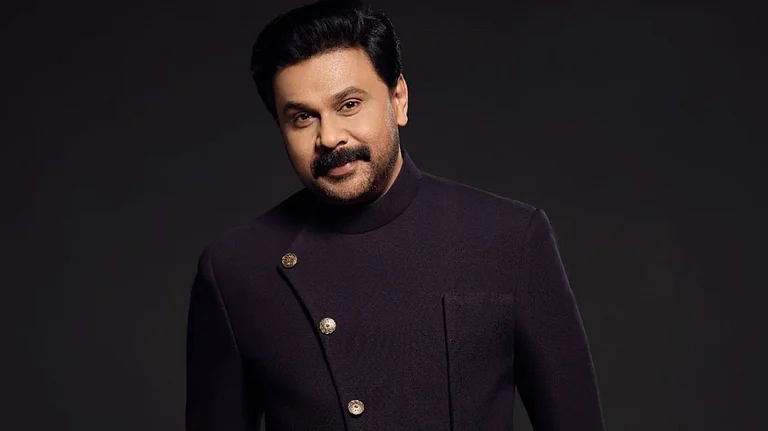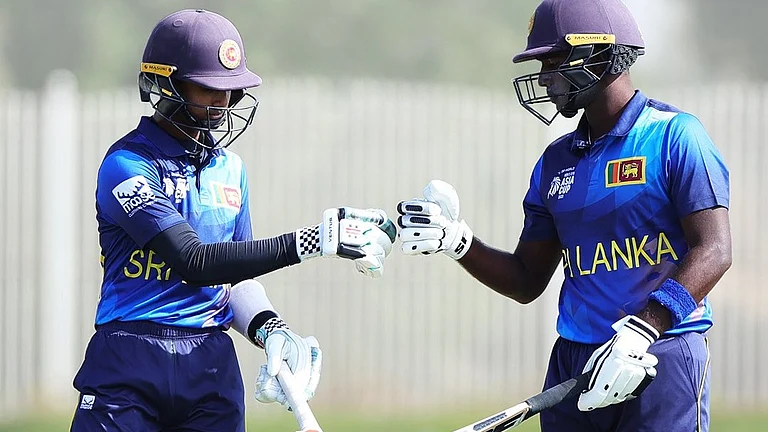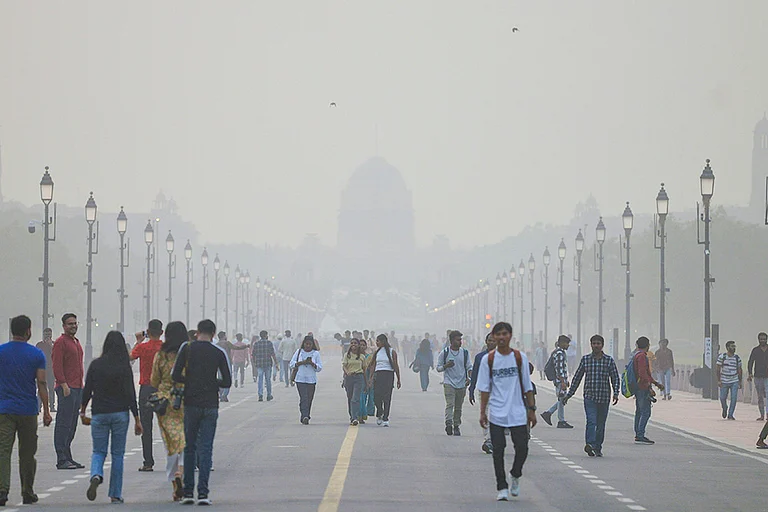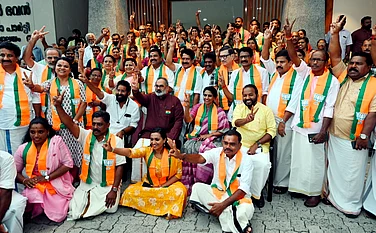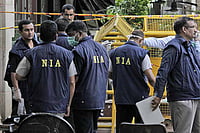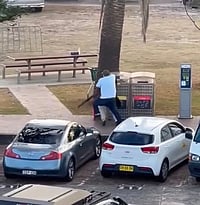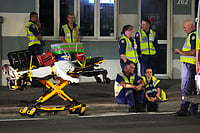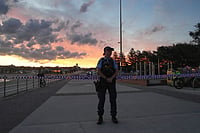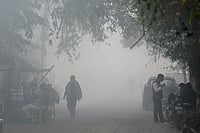Firm that there cannot be any opposition coalition without the Congress Party, the Shiv Sena is making an attempt to galvanise the former into action. In a recent meeting with Rahul Gandhi, the former president of the Congress Party, Sanjay Raut, Shiv Sena Rajya Sabha MP did just that.
Both these parties along with the NCP are the constituents in the tripartite Maha Vikas Agadhi (MVA) government in Maharashtra.
Raut, an emissary of chief minister Uddhav Thackeray – who is also the Shiv Sena chief – told the Congress leader that he should initiate the process of inviting other like-minded leaders to form a coalition opposed to the BJP. These two parties are the ideological opposites of each other. While the Shiv Sena staunchly supports the Hindutva agenda, the Congress Party is opposed to it.
Besides, the Shiv Sena has also in the past had pre and post-poll alliances with the BJP. Both these saffron parties have also been partners in governance in Maharashtra from 1995 – 1999 and again from 2014 – 2019. The Shiv Sena has also been a constituent of the ruling NDA.
Therefore, the Shiv Sena move urging the Congress Party to glue together a fragmented opposition comes as a surprise. In the two years of MVA governance in Maharashtra, the Congress Party has been an “isolated third”.
The friendship between NCP chief Sharad Pawar and Thackeray has been a matter of much discussion. While they are constantly meeting and discussing matters of importance, the Congress Party is kept out of it. Time and again both the Congress Party and the Shiv Sena have reiterated that they are bound in
Maharashtra is solely by the common minimum programme of the MVA.
The trigger for the Raut-Gandhi meeting has been the recent Maharashtra visit of West Bengal chief minister Mamata Banerjee. She met leaders of the NCP and the Shiv Sena but sidelined the Congress Party completely. She had also mocked the existence of the UPA during her media interaction. During her meetings with NCP chief Sharad Pawar and Shiv Sena leader and the chief minister’s son Aaditya Thackeray, Mamata Banerjee has been categoric about keeping the Congress Party away.
However, neither Pawar nor Uddhav Thackeray believes that a united opposition can be stitched together without the Congress Party. “Mamata Didi is emotional and not practical on the issue of keeping out the Congress. The support base and network of the Congress are important factors. The Party is still winning seats. A formula without the Congress is not workable,” said a senior Shiv Sena leader. Ditto is the echo from the NCP’s leadership.
Since the MVA Government came into power in Maharashtra, Uddhav Thackeray has shared a warm and friendly relationship with Congress Party president Sonia Gandhi and Rahul Gandhi. In fact, Aaditya Thackeray has met Rahul Gandhi on numerous occasions and has come back beaming.
Rahul Gandhi is expected to visit Mumbai in the last week of December for the foundation day celebrations of his party. He is expected to meet both Pawar and the chief minister during his visit to the city said sources.
If a torch is focused on the political past of the Congress Party and the Shiv Sena, theirs is a friendship that spans over five decades. In these five decades, both parties have helped each other grow despite being social, economic and political adversaries.
Until 1985, the Shiv Sena was considered to be a shadow of the Congress Party in the political sphere. After this year, the founder of the Shiv Sena Bal Thackeray befriended the BJP politically and there formed the saffron alliance.
As the clout of the Congress Party increased in Maharashtra, the Shiv Sena grew and started spreading its tentacles across the then Bombay. So, in a way, the growth of both these parties are directly connected to each other.
Pan to the 1960s when industrialisation was rapidly spreading through Bombay and the city sat on the cusp of a new tomorrow. Bombay was home to the textile mills, a fact that gave the city its character. The textile mills extended from Parel in Central Bombay to Girgaum in South Bombay. As the number of workers grew so did their problems.
The culture of trade unionism was brought into the then Bombay by the Communist Party of India. The workers flocked to these trade unions and looked upon them as a means of deliverance from the problems they faced, particularly low wages and long working hours. Along with the trade unions grew Communism. The Congress was the party in power in Maharashtra in the 1960s. Finding it difficult to contain the growing communism in Bombay, an “under the surface friendship” grew between the Congress Party and the Shiv Sena, again.
It is said that the Congress Party in a way encouraged the Shiv Sena to strengthen its Marathi Manoos (sons-of-the-soil) plank, which the latter was already involved in. Since the mill workers were Marathis who had converged to Bombay from all parts of Maharashtra to work in the mills, the Shiv Sena found it easy to draw them to their fold. The Shiv Sena was then working as a political organisation and not as a political party. It is the Congress Party that aided the birth of the Shiv Sena in 1966.
The founders of the Shiv Sena also included many Congress Party stalwarts such as the late deputy chief minister Ramrao Adik. It was the Congress Party that helped the Shiv Sena gain a foothold into the trade union movement. Violent clashes started between the party workers of the Shiv Sena and the Congress Party. The Congress Party government in the state was a silent bystander to this political violence. In 1967, the Shiv Sainiks burnt down the CPI office located at the Dalvi building in Parel. The violence was uncontrollable and reached a peak when Krishna Desai, a powerful CPI leader and trade unionist was murdered.
Bal Thackeray’s charism and popularity was at an all-time high and attracted the sons of many CPI leaders. Through all this, the Congress Party stood behind the Shiv Sena like its shadow. In 1977, when the late Prime Minister Indira Gandhi imposed Emergency in the country, Thackeray emerged as a vocal supporter. Bal Thackeray supported Congress leader Murli Deora in the mayoral polls of Bombay and got him elected. A year later in 1978, the Congress Party reciprocated and supported Shiv Sena’s Waman Mahadik and he was elected as mayor of Bombay.
Interestingly, when the Shiv Sena was at the peak of its popularity and would have made substantial gains in the Maharashtra Assembly polls in 1980, Thackeray decided to opt-out of the polls and extended support to the Congress Party. He addressed rallies for Congressman Babasaheb Bhosle who later became the chief minister of the state.
However, the Congress Party started feeling politically threatened and cracks developed in their friendship. Though personal friendships continued between the leaders of both parties, the political “arrangement” had taken a beating. The relationship broke up completely when the Shiv Sena took a hard-line Hindutva stand and cosied closer to the BJP.
Coming back to the present-day reluctance of Uddhav Thackeray to strike up a new friendship with Mamata Banerjee speaks volumes of the trust he places in the leadership of the Gandhis and the Congress Party to unite like-minded opposition parties across the political divide.






.jpg?w=801&auto=format%2Ccompress&fit=max&format=webp&dpr=1.0)

